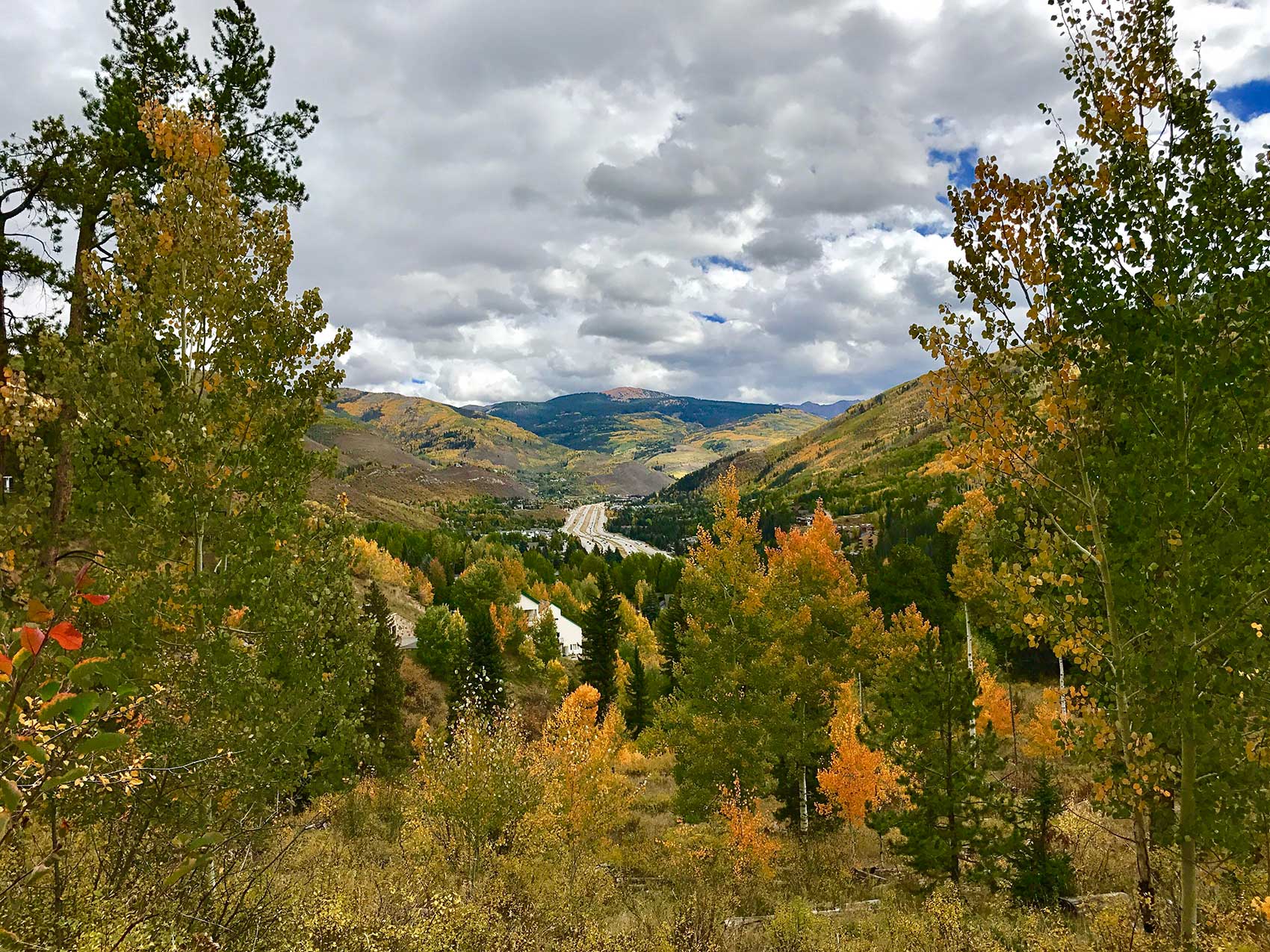There’s no place quite like Vail in the fall. Massive wildfires in the late 1870’s burned down much of the area’s pine forests, creating Vail’s back bowls along with vast stands of aspens. These aspen groves cast golden entire hillsides or even mountaintops (like Vail’s Golden Peak). Their understories of grasses and bushes transform to a palette of reds, oranges and golds, sprinkled with bright and often incongruous late fall flowers.
Stunning Hiking in Vail
Hiking during fall is not to be missed and the nearby North Trail, lined with aspens and traversing the Vail Valley’s west side, is an excellent way to get out amid the foliage. The trail has five access points or trailheads. (See the Forest Service map below; the following descriptions will correspond with it). Trailhead 4 (Red Sandstone) is at the initial hairpin turn on Red Sandstone Road. It ascends on gentle switchbacks before settling into its high traverse behind Simba Run. Trailhead 3 (Buffehr Creek) also climbs on gentle switchbacks to a high traverse behind West Vail. This is also an excellent starting place for families who may want a shorter hike. Take the first right fork off the North Trail and head down the short, gentle descent to the beaver pond and cascading Buffehr Creek. Trailhead 1 (Trapper’s Run) begins at the end of Frontage Road West and after ascending switchbacks through pines and aspens, it’s a marvellous way to access Davos, a jeep road dedicated mostly to hiking and biking. Upper Davos provides views down to Avon, Beaver Creek Mountain, and beyond. All of these portions of the North Trail serve up stunning panoramas.
Hike out and back, connect sections, or make a day of it and go for it all, but be sure to pause and listen: You may hear the elk bugling!



